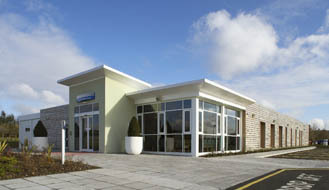05 January 2011
Yorkon Publishes New Technical Paper for the Design of Flexible and Adaptable Healthcare Facilities
Healthcare construction specialist, Yorkon, has published a new technical paper for architects, contractors, healthcare and estates professionals - 'A Guide to Health Building Note 11-01 - How to Plan and Design Flexible and Adaptable Facilities for Primary and Community Care'.
The Department of Health's Health Building Notes (HBNs) provide best practice guidance for the planning and design of healthcare buildings and the adaptation or expansion of existing facilities. As part of a new suite of guidelines, HBN 11-01 sets out a less prescriptive approach to the design of facilities for primary and community care services, which will have far-reaching impact.
This latest technical paper from Yorkon summarises how healthcare facilities can be designed to be much more flexible, accommodating different activities and service providers. Buildings now have to be more adaptable for a variety of uses - and potentially on a daily, weekly or longer-term basis.
The report looks at:
- Guiding principles and design issues
- How to develop a brief to respond to service requirements
- Strategies to maximise flexibility and adaptability
- How to size a development
- The principle of zoning in a healthcare facility
- Integrating primary and community care services
- Engineering service considerations
- How off-site construction can enhance adaptability.
Commenting on the new Department of Health strategy, David Johnson, Director and General Manager of Yorkon, said, "This guidance offers a host of benefits using integrated thinking and a fresh approach to the design of healthcare facilities. The guidelines promote flexible, multi-functional and adaptable buildings that can be expanded or contracted according to changing local needs and NHS strategy."
"The benefits include avoidance of over-capacity and under-utilisation of buildings, staff will have fantastic places to work in, buildings will be more sustainable and efficient, and patients will be treated in safe, secure, welcoming and user-friendly environments, with privacy and dignity."
He added, "The guidance also highlights the opportunity to maximise work off site. The cluster layout of primary and community care facilities outlined in HBN 11-01 lends itself very well to off-site construction, allowing healthcare providers, staff and patients to benefit from the speed, quality, efficiency and sustainability advantages of more innovative construction solutions."
Historically, primary care services have been delivered from buildings of widely varying quality. Buildings became larger at increased cost, as more services had to be accommodated, and the efficiency of those buildings decreased.
The overriding principle of the new guidelines, which are outlined in the Yorkon report, is the shared use of space. Designers are encouraged to consider wider uses for a building than '9 to 5', and the impact of key service issues on space planning, such as service timetabling.
The guidance is applicable for the design of GP surgeries, health centres, primary care facilities, resource and urgent care centres, and community hospitals.
To download a copy of the new technical paper, visit www.yorkon.info/industryreports.
Yorkon is part of the Portakabin Group.
Editor's Notes
The Yorkon steel-framed modular building system is a highly sustainable alternative to traditional site-based construction for healthcare projects. It offers:
- Programme times reduced by up to 50 per cent, allowing earlier completion with a positive impact on patient care
- Reduced disruption to patients, staff and the local community during construction
- Material wastage reduced by up to 90 per cent
- Up to 90 per cent fewer vehicle movements to site
- Safer, quieter and cleaner construction
- Improved quality and reduced future maintenance
- A high level of design flexibility internally and externally
- Buildings can be expanded without decanting
- Improved thermal efficiency for lower running costs and reduced carbon emissions
- Greater cost control.
Image copyright Hufton + Crow

